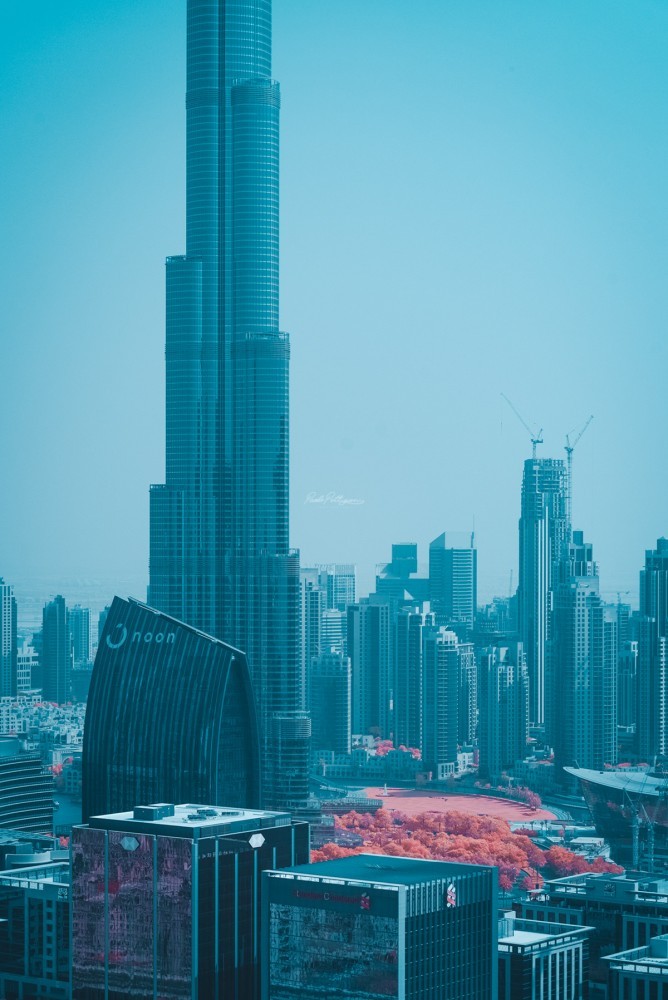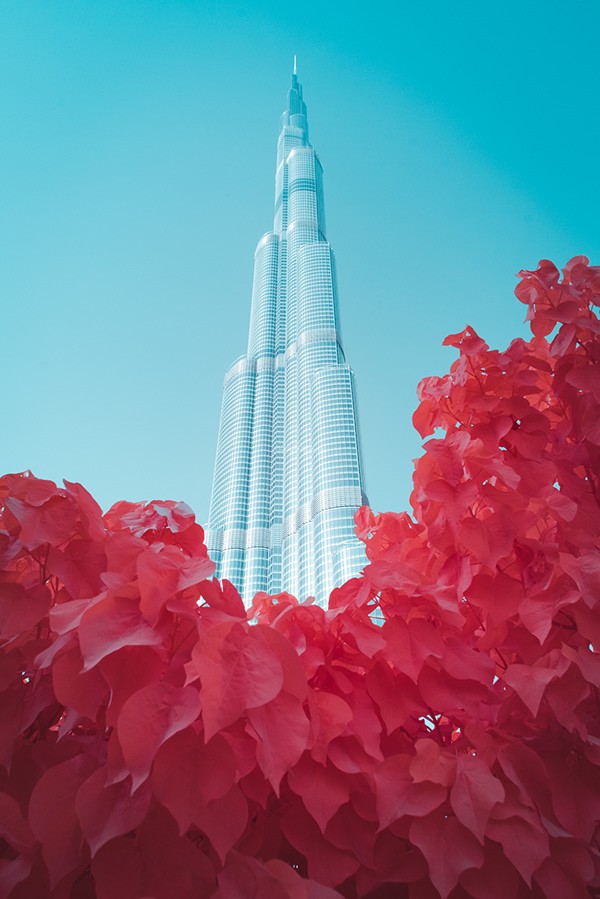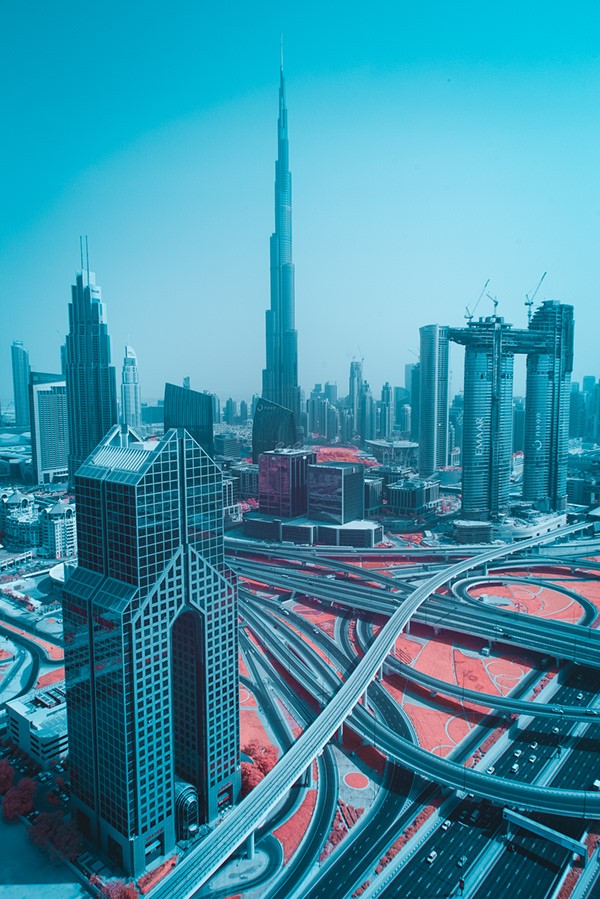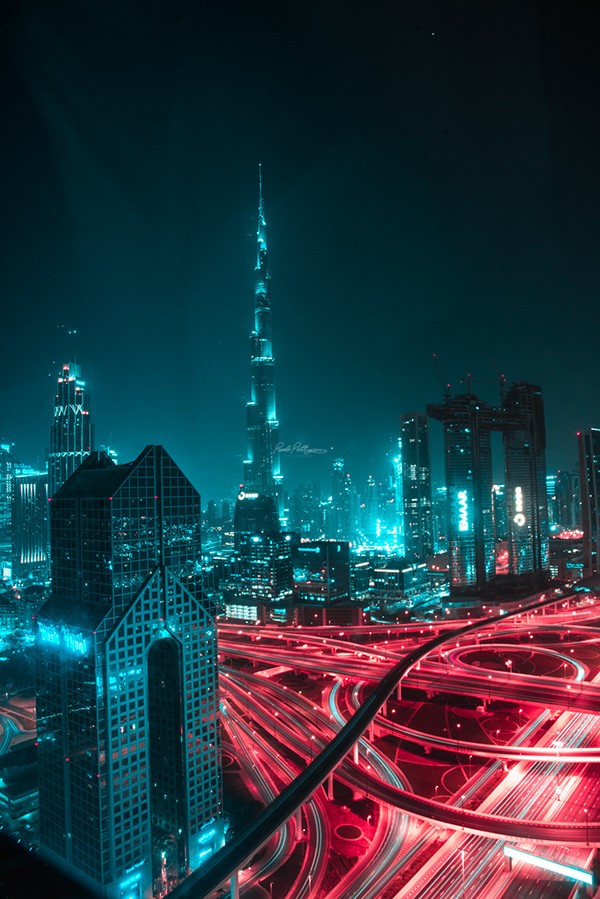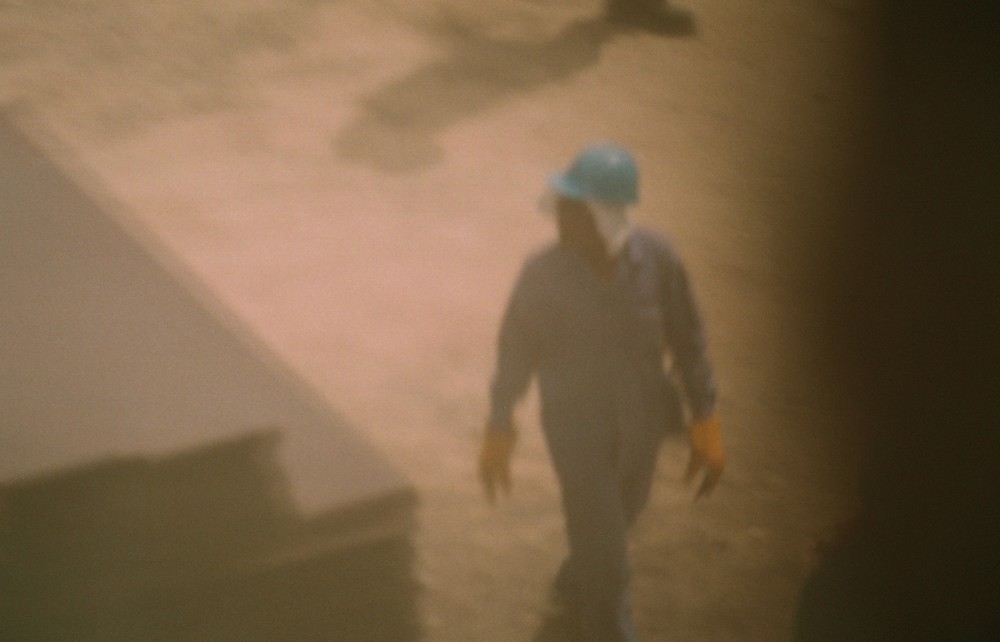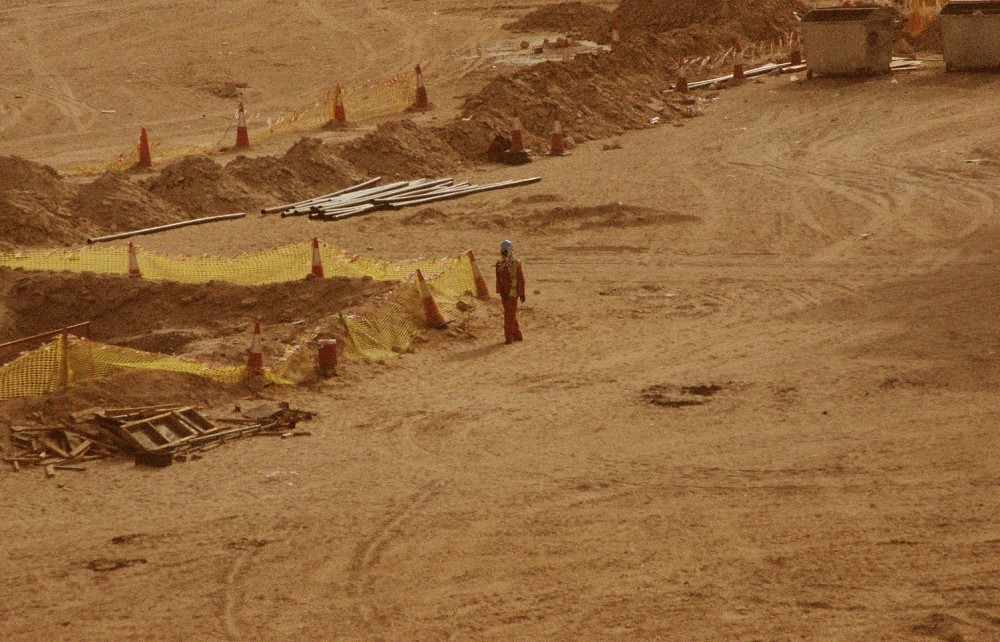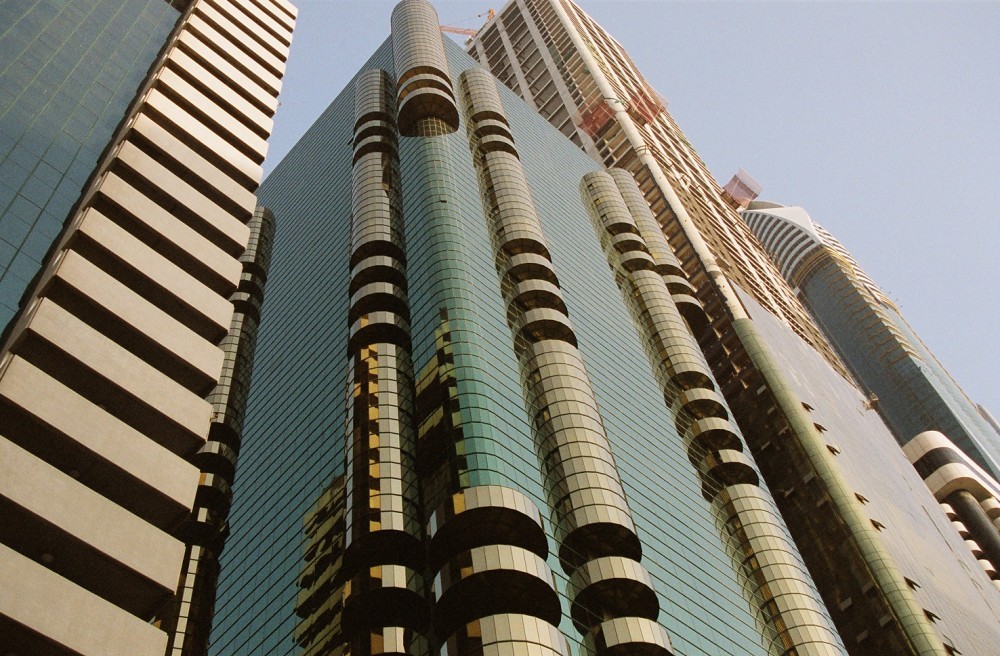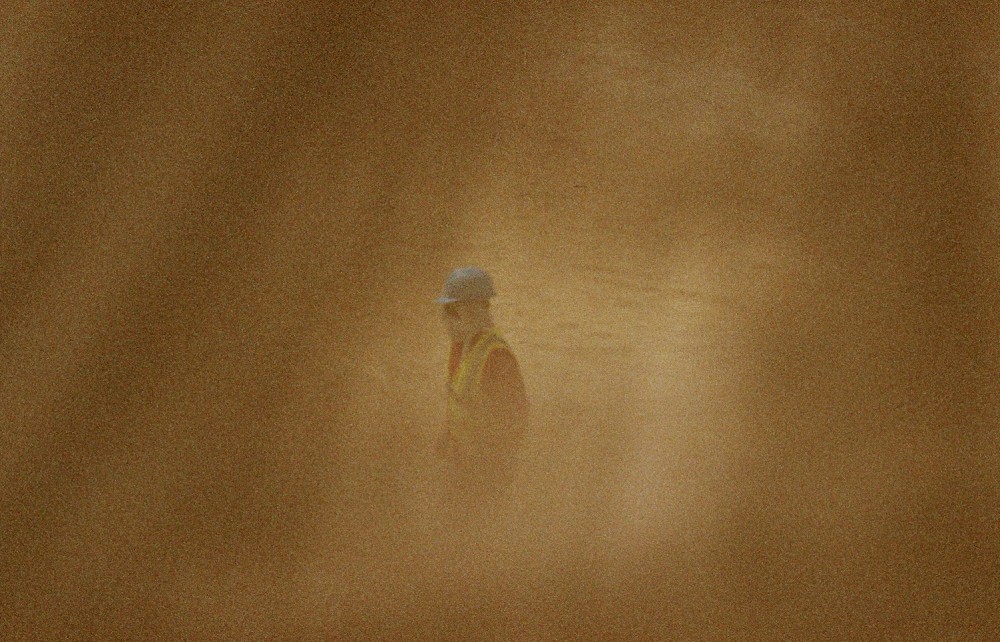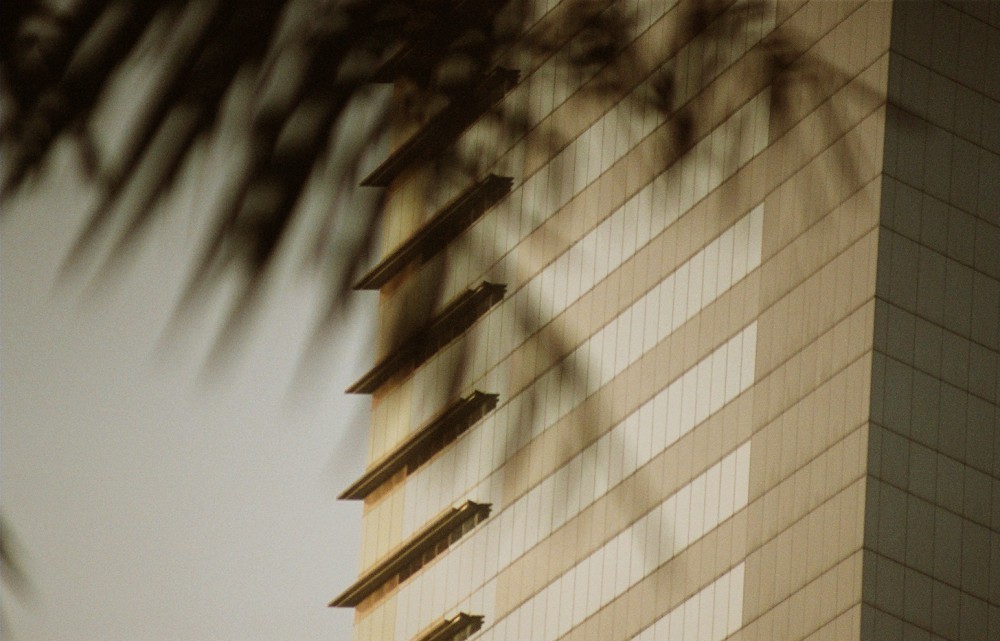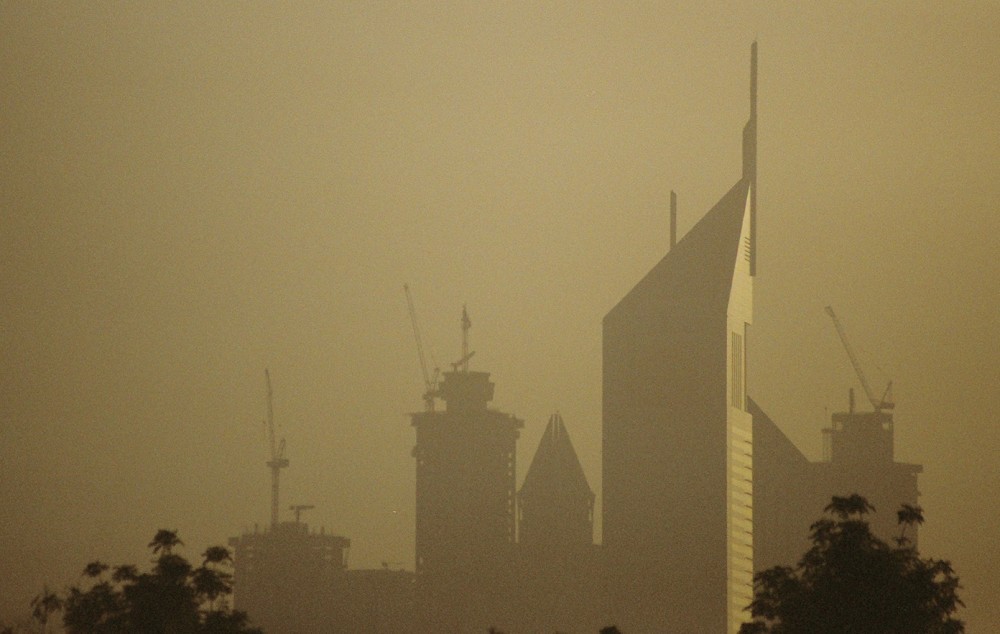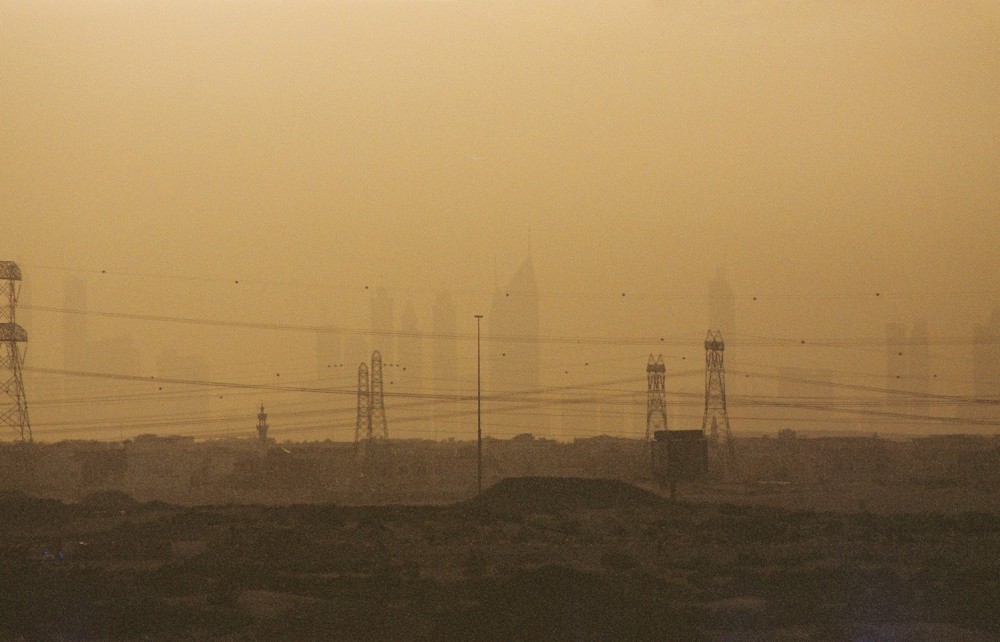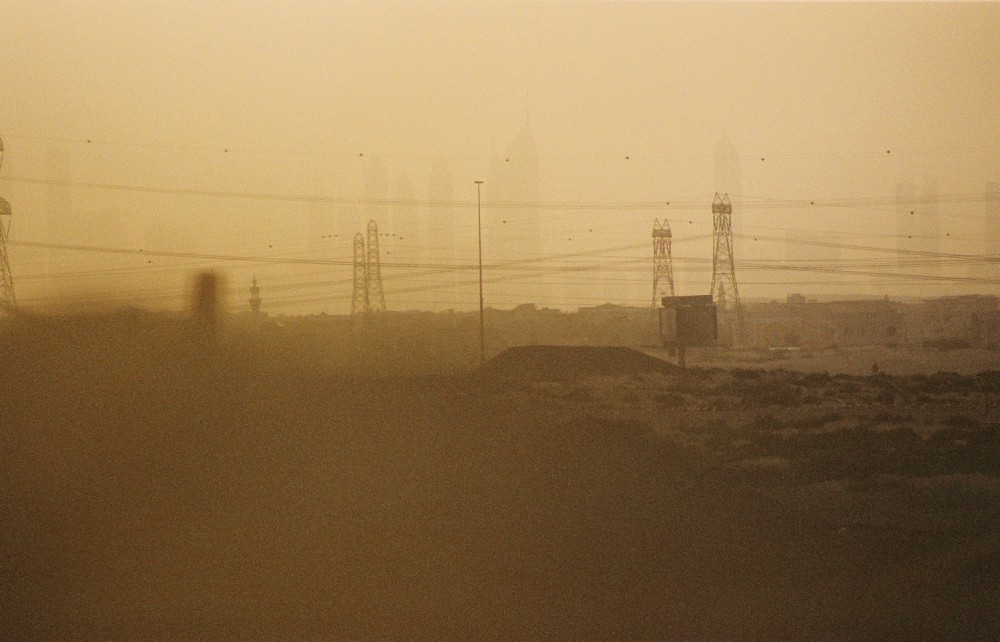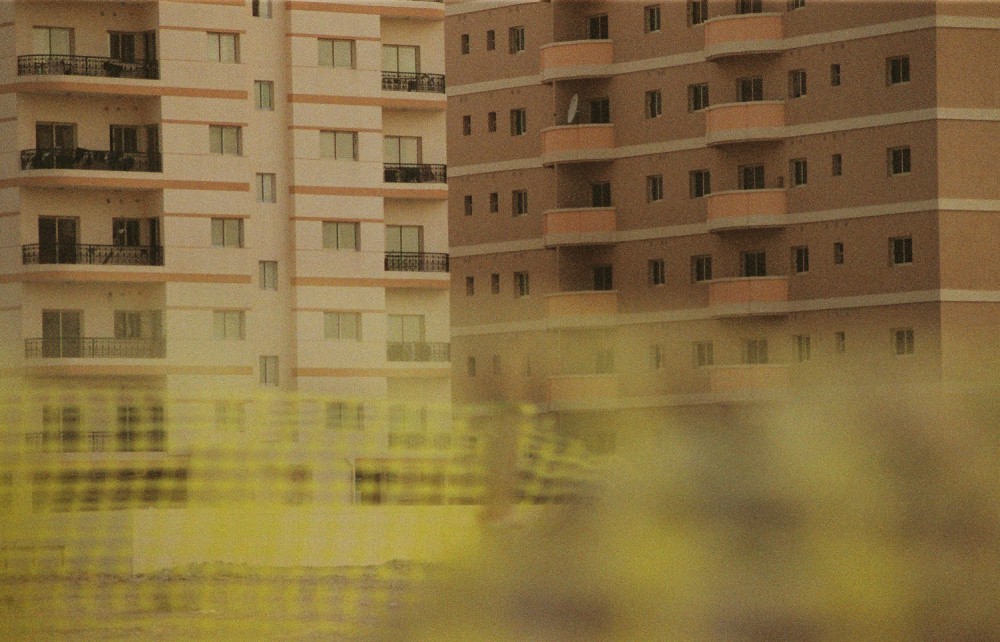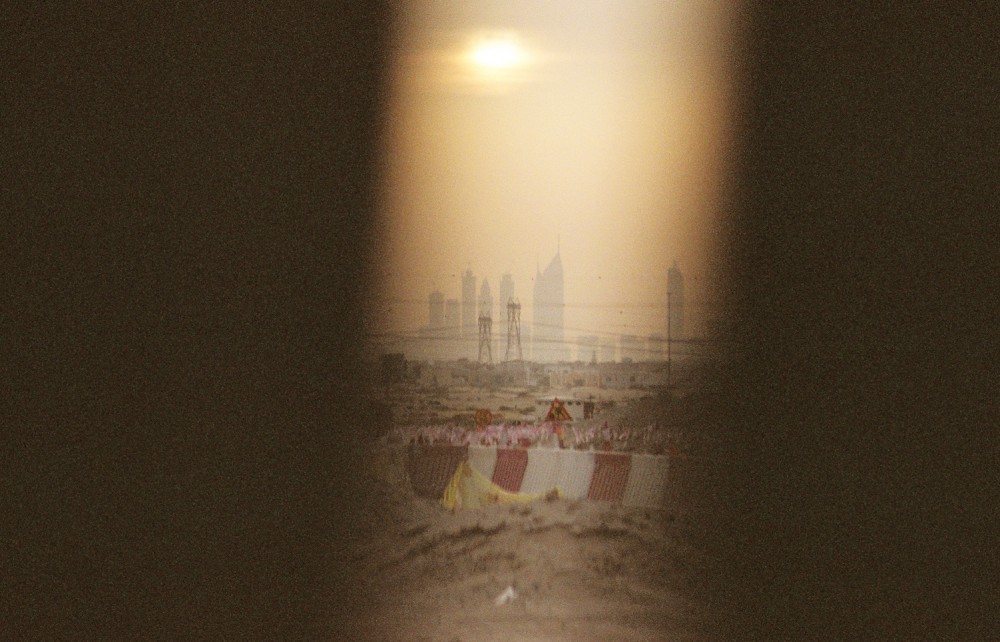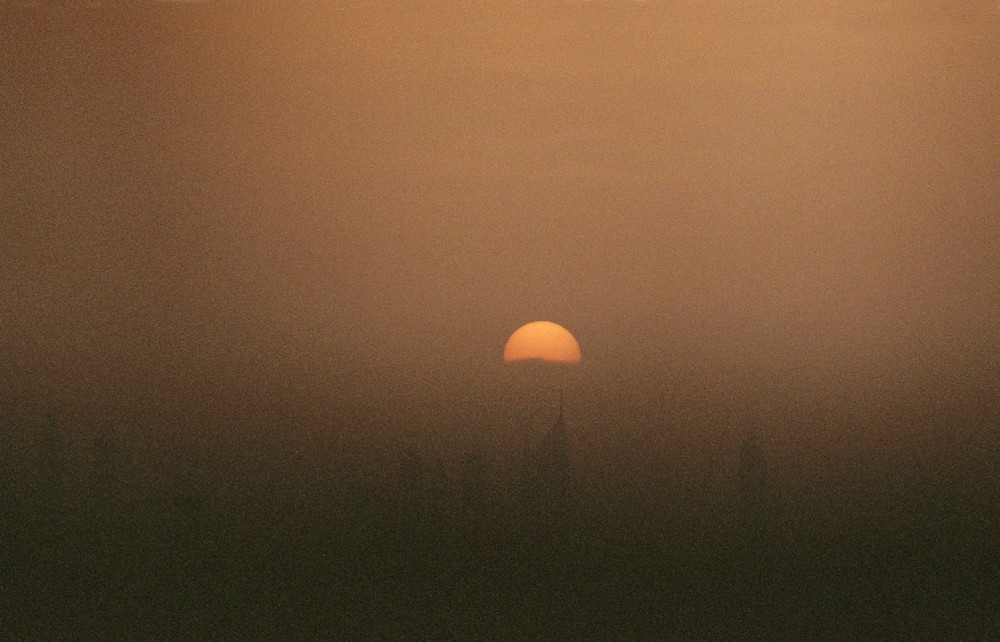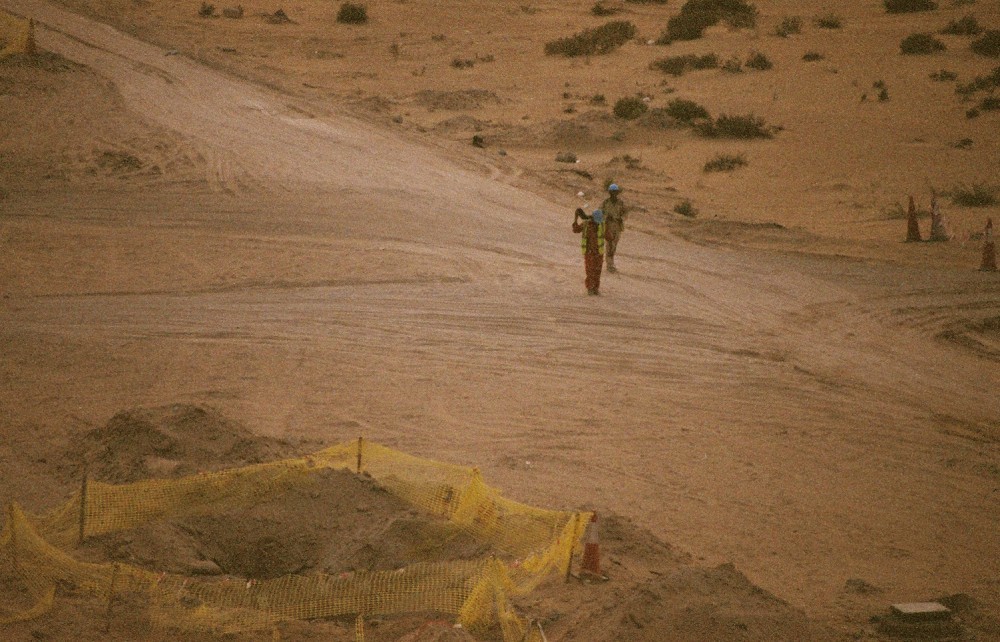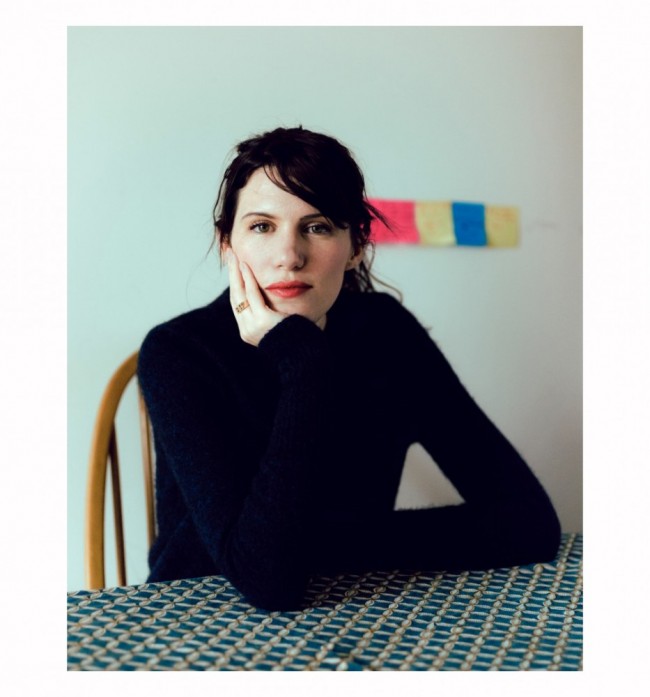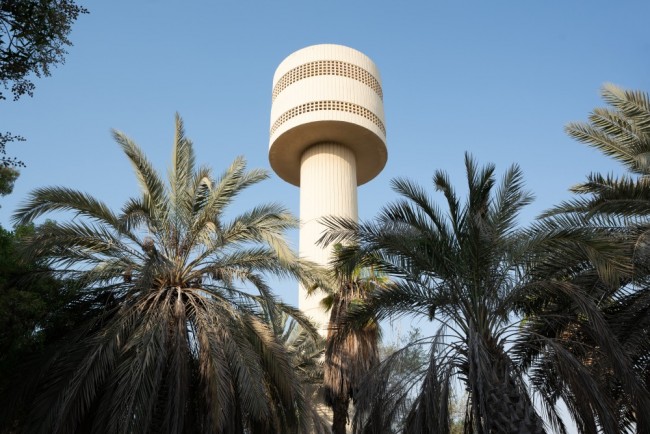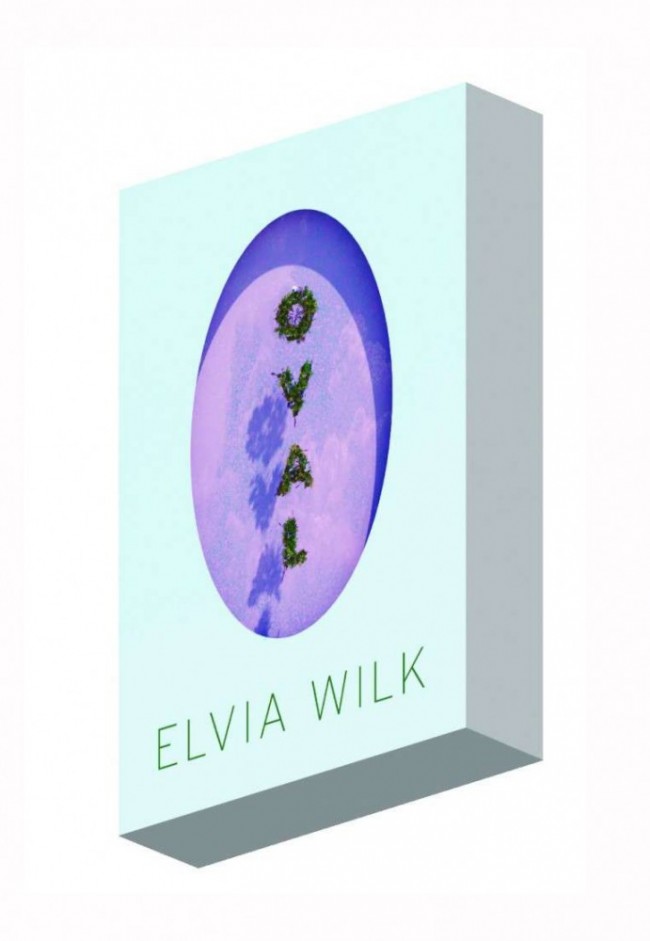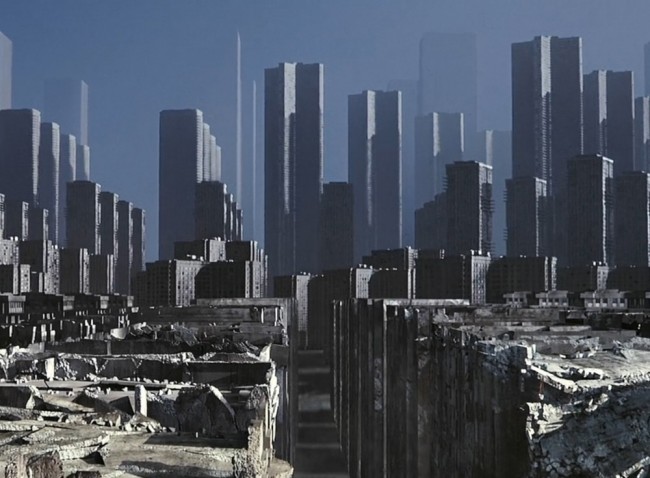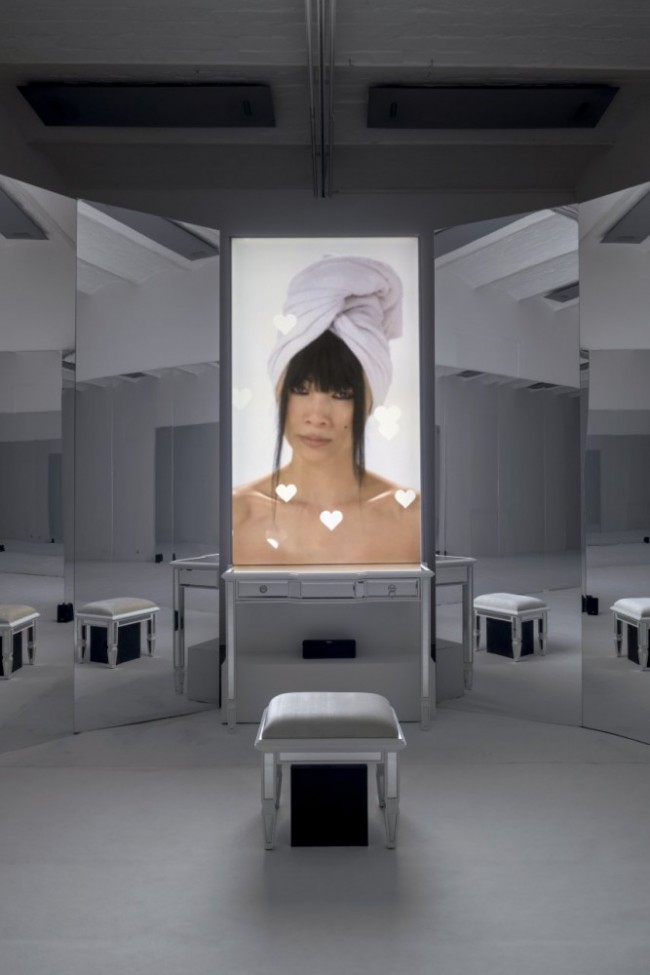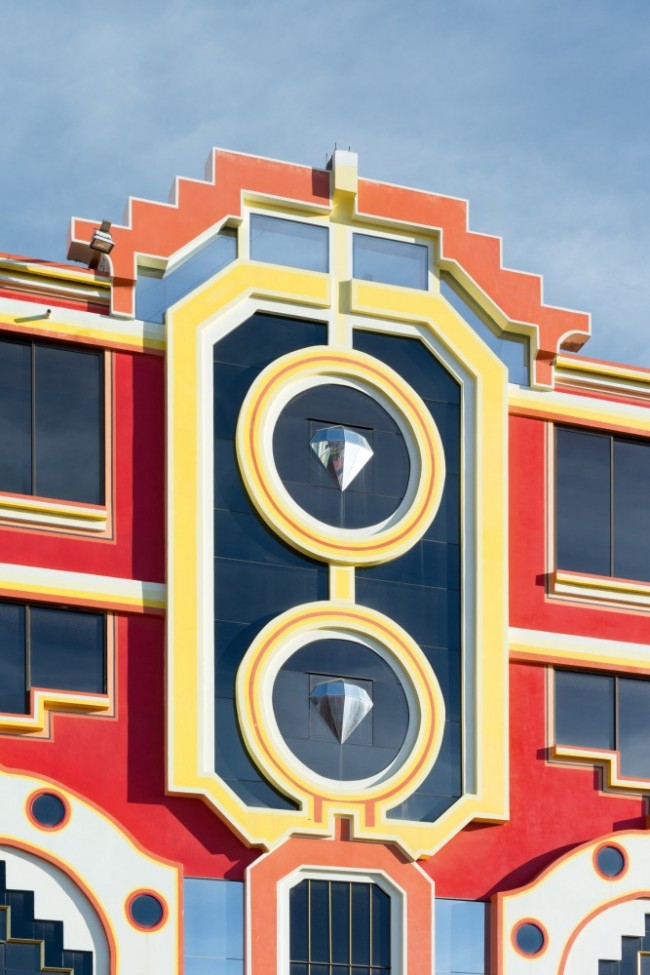FROM DUBAI TO DUNE: SOME THOUGHTS ABOUT DESERTNESS
Author, theorist, and curator Shumon Basar is originally from London but today splits his time between Berlin and Dubai, which he first visited nearly a decade and a half ago. For PIN–UP's desert issue, he meditated on barren landscapes and the built environments we've constructed in them as well as how they're connected to the world-building impulses of futurism and science fiction.
1 – If I have to date when I properly started to think about deserts, it goes back to my arrival in Dubai at the end of 2005. This was more-or-less midway between 9/11 and the global financial crisis — that first, short decade of the 21st century. By this time, Dubai had almost immediately become the reification of state-governed, “Islamic” financial capitalism. Things changed fast around here. Desert to downtown in one generation.

“Dubai Infrascapes” by Paolo Pettigaini.
2 – Typically during December the temperature there can average 79 degrees Fahrenheit; by summer, it can reach an unbearable 131 degrees. Like Singapore, Dubai is an “air-conditioned nation.” Its livability is a function of artificial climate control.
3 – There are vast swathes of Earth that confound human habitability, and yet humans persevere in these places. Being struck — or stuck — between scorched desert on one side and sea on the other may not seem like the best of locations to build a city. But Dubai turned this apparent deficiency into a positive asset — indeed much of its 21st-century futurism rhetoric was built around its desert location. Advantage one of a tabula rasa traipsed over by Bedouin tribes for hundreds of years is that there’s little built history to contend with. No foundational forebears or symbolic, mythic origins to tiptoe around. It’s been billed as one huge sheet of blank paper to reboot the future. Advantage two is that there is nothing to limit growth. Like Las Vegas, one of the fastest-growing cities in the U.S., Dubai has virginal space to expand as and when it wants. And it does so in both directions, devouring desert and invading the sea.
4 – Never has nothing provided so much.
5 – The skyline — dominated by the world’s tallest building, SOM’s Burj Khalifa (2004–10) — is all the more extreme because of the desert’s close proximity. Geological time — sand, dunes — schizos against human time — twelve-lane highways, the world’s busiest airport. Among the buildings on the skyline is the Mall of the Emirates with its infamous indoor ski slope. But snow in the desert comes at a price: they‘ve tried everything to resolve the problem, but they simply don‘t know how to stop the glass in the windows from cracking under the temperature difference.

“Dubai Infrascapes” by Paolo Pettigaini.
6 – Star Wars: The Force Awakens (2015) was partly filmed in neighboring Abu Dhabi. Decades earlier, the very first “Star Wars” movie A New Hope shot Luke Skywalker‘s home planet Tatooine in Tunisia’s deserts. Why do deserts serve science fiction so well? As the artist Asad Raza has said, the deep past can serve as a form of science fiction. The desert is either the landscape after the end of time, and therefore futuristic, or it‘s the surface from which nothing has yet happened, and thus pregnant with all futures.
7 – I found it weird, when I looked up what a desert is geologically speaking, to discover that the largest ones are Antarctica and the Arctic. Desert is defined as a barren area of landscape where living conditions are hostile for plant and animal life. Sand is not as necessary an attribute.
8 – The second half of Don DeLillo‘s 2010 novella Point Omega is set in an American desert. It suits DeLillo’s bare theatrical dialogues where estranged characters seem to talk as much into the void as to one another.
9 – In Las Vegas, the endless clinking of slot machines and the atemporal interiors of windowless casinos felt like sensory torture to me (many millions, of course, do not agree). The best thing about Las Vegas was leaving Las Vegas and heading instead into the Nevada desert.
10 – In contrast, the silence of the desert was instantly cleansing. A pilgrimage to Zabriskie Point, where Michelangelo Antonioni set part of his eponymous 1970 feature film, reinforced the spiritual dimension of deserts. The body feels different out there. Less able to hide behind the camouflage of cultured life. No wonder Burning Man does what it does in the desert.
11 – Dryness, punishing heat, emptiness, being estranged from the markers of human time: hot deserts — American, Middle Eastern, African — provide rich narrative settings for literary and cinematic drama. But they‘re never just settings: they‘re also overpowering characters in their own right. Amoral judges. Nature as a vengeful god.
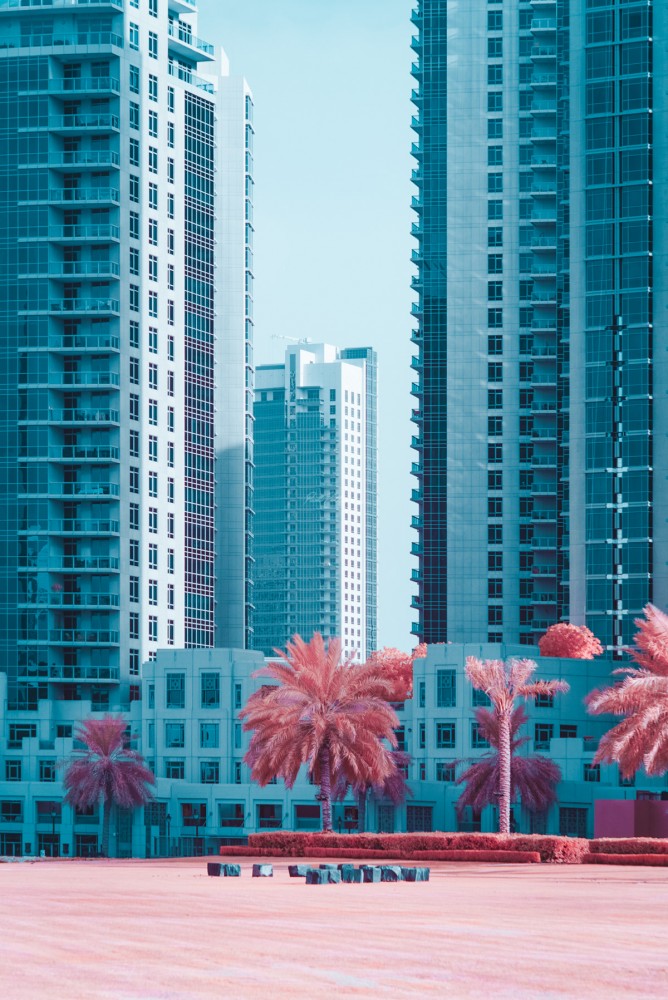
“Dubai Infrascapes” by Paolo Pettigaini.
12 – In Gus Van Sant‘s 2002 film Gerry, two hiking companions — both called Gerry — find themselves desperately lost in a desert, wandering silently, until gruesome murder is inevitable. Is a murder less of a murder if it happens in the desert? Might the desert be to blame?
13 – I‘ve also been wondering if the city is the opposite of the desert? If the mall is the desert in a city?
14 – We glean so much aesthetic and moral pleasure from the pictures of brand-new settlements built in desert landscapes — Saudi Arabia, Mongolia — which are never inhabited, and instantly transform into ancient, ghostly ruins. There‘s the whole story of civilization‘s ambition and idiocy in these hubristic failures, especially, as archaeology tells us, many deserts hide previous civilizations‘ buried cities.
15 – The desert is, thus, one of the ultimate encodings of deep time. Against which, human time will always lose.
16 – Deserts and “desertness” allow for the fantasy of imagining an earth without us, or, at the liminal point when the “us” is about to become no more.
17 – When we were scared to stay in the desert at night, Baba would tell us, “The dunes sing. They’re filled with djinn. Spirits. Za’eeq al raml,” which meant, “shouting sand.” He promised us the djinn were there to protect us. Not harm us. And we would sing with the dunes till we‘d fall asleep.
18 – Gulf Futurism, a term coined by the Qatari-American artist, writer, and filmmaker Sophia Al Maria, has been described as many things (shiny skyscrapers, petro-fueled SUV machismo, nouveau-riche bling-baroque interior design), but, arguably, the kinds of deserts found in the Arabian Gulf are deep in the subconscious of the cities that have grown out of them: Kuwait, Manama, Doha. Gulf Futurism knows that from sand the skyscrapers were made. To sand the skyscrapers ultimately one day will return.
19 – Sand, as silica, as glass, as psychotropic building material, is not unlike melange, the all-powerful drug found in Frank Herbert’s 1965 science-fiction novel Dune.
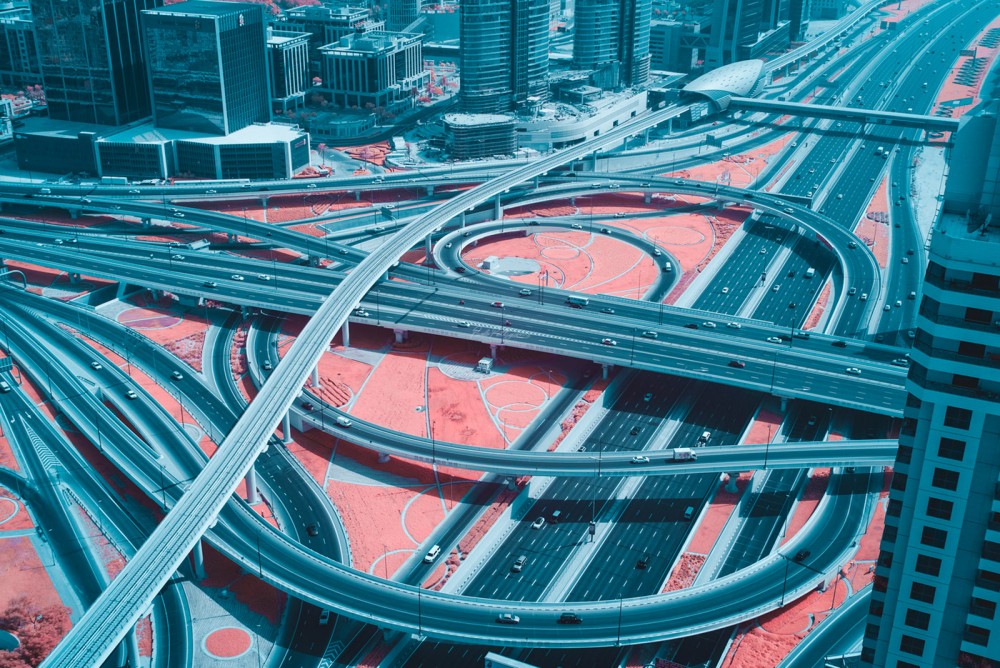
“Dubai Infrascapes” by Paolo Pettigaini.
20 – As Princess Irulan narrates at the start of David Lynch’s 1984 movie adaptation of Dune: “A beginning is a very delicate time. Know then that it is the year 10,191. The known universe is ruled by the Padishah Emperor Shaddam IV, my father. In this time, the most precious substance in the universe is the spice melange. The spice extends life. The spice expands consciousness. The spice is vital to space travel. The Spacing Guild and its navigators, who the spice has mutated over 4,000 years, use the orange spice gas, which gives them the ability to fold space. That is, travel to any part of the universe without moving. Oh, yes. I forgot to tell you — the spice exists on only one planet in the entire universe. A desolate, dry planet with vast deserts... The planet is Arrakis, also known as Dune.”
Text by Shumon Basar.
All images are from the series “Infrascapes” by photographer Paolo Pettigaini, unless otherwise noted.



